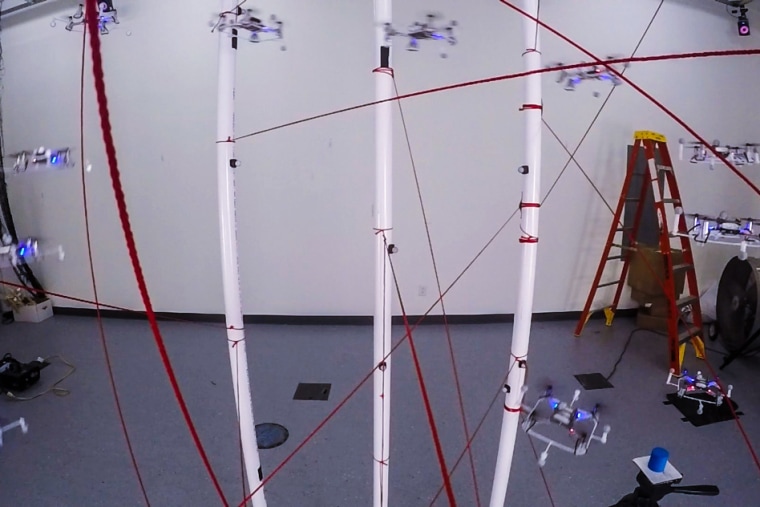Drones may be agile enough to play pingpong, but that doesn't mean they automatically know their way around a room. Researchers from MIT presented new methods for small craft to identify and avoid obstacles this week, showing them off in an impressive video.
One new algorithm, from graduate researcher Benoit Landry, focuses not on the items the drone has to avoid but on the empty, navigable space between them. By calculating safe zones ahead of time and tracking the drone's progress carefully, a path can be chosen without constantly checking for nearby obstacles.
"Using free-space segments is a more 'glass-half-full' approach that works far better for drones in small, cluttered spaces," Landry said in an MIT news release.
The technique is effective enough that a drone can nip through an artificial "forest" of strings, making sharp turns at high speed along its way.
Another approach, described in a paper by Ph.D. student Anirudha Majumdar, also focuses on empty space, but pre-processes a number of flight plans that a fixed-wing drone can switch between at will — for instance, if a gust of wind blows it off its original course.
Landry will present his paper at the International Conference on Robotics and Automation in Sweden this May. MIT professor Russ Tedrake is credited as co-author on both.

